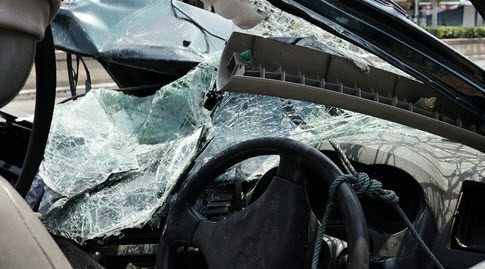Despite what catchy commercial jingles may imply, an insurance company is not “on your side” if you are a car crash victim. These businesses make money by collecting large premiums and denying as many claims as possible, which is why the company is committed to minimum compensation for victims.
In court, insurance company lawyers usually employ legal loopholes to shift as much blame as possible onto the victims. There are two basic approaches.
Factual Defenses
In many cases, the tortfeasor (negligent driver) and victim were arguably both at fault, a doctrine known as contributory negligence.
First, the insurance company must establish that the victim was negligent along with the tortfeasor. That is not always easy to do, because not all poor driving behavior constitutes negligence. For example, taking one’s hand off the wheel and one’s eyes off the road to adjust the climate control is technically distracted driving, but almost no judge would consider such behavior to be negligent.
If the judge makes an adverse decision at this juncture, that point may be appealable.
Second, if the question goes to the jury because the judge finds the victim was negligent, the jury must apportion responsibility between the two parties, such as 50/50 or 60/40 or whatever. To maximize compensation in these cases, a good attorney will focus on what the victim did correctly. For example, if the victim was speeding, there’s a good chance that the victim was simply moving along with the flow of traffic and therefore not operating the vehicle in an overtly negligent manner.
Since Florida is a pure comparative fault state, the judge will reduce the victim’s damage in proportion to the amount of negligence. So, if the jury determines that the damages were $100,000 and the victim was 20 percent responsible, the tortfeasor must pay $80,000.
Legal Defenses
While contributory negligence relies on the facts, there are some other doctrines that are strictly legal questions for the judge to decide.
The sudden emergency defense is an issue in many pedestrian-auto accidents, because in most of these incidents, the pedestrian is outside the crosswalk, and the insurance company argues that the tortfeasor is therefore not responsible for damages. But “sudden emergency,” in this context, means a completely unanticipated situation, such as a hood fly-up. Additionally, for the defense to apply, the tortfeasor must act reasonably in the wake of the sudden emergency.
Last clear chance is a similar doctrine that is an issue in many head-on crashes. Essentially, if the victim could have avoided the crash, perhaps by changing lanes, and failed to do so, the tortfeasor is not liable for damages. It is noteworthy that the victim must have the last clear chance, which is different from the last possible chance.
Finally, in passenger injury cases, especially ones involving an intoxicated motorist, the insurance company often uses the assumption of the risk defense. This doctrine excuses liability if the victim voluntarily assumes a known risk. So, for the defense to apply, the victim must probably be in the car when the intoxicated tortfeasor has a near-miss with another vehicle.
Connect with Tenacious Attorneys
The insurance company will do everything possible to ensure unfair compensation. For a free consultation with an experienced personal injury lawyer in Brandon, contact Reed & Reed.
From our office in Brandon, Reed & Reed helps clients in Tampa, New Tampa, Plant City, East Hillsborough County and throughout the state of Florida.
Resource:




